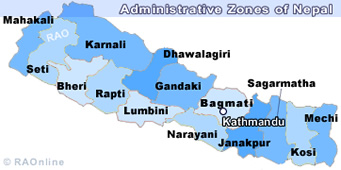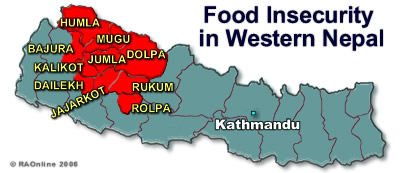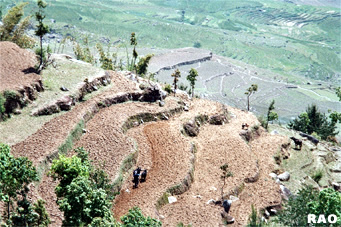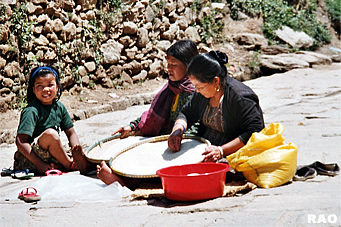|
Development
in Nepal: Reports on Food Crisis
|
 |
Nepal Development |
|
 |
Nepal Development |
|
|
 |
|
Concerns
over worsening food security
|
 |
KATHMANDU,
9 March 2009 (IRIN)
Food
insecurity is increasing in poor areas of both eastern and western Nepal
due to poor harvests and high prices for imported food, oil and transportation
Agricultural
experts are expressing concern that people in already food-insecure Nepal
will have to further tighten their belts unless food, transport and other
costs can be curbed.
 |
| Queueing for government food - many parts of Nepal do not grow enough to
feed the population |
 |
|
Local
food traders told IRIN that in 2008 prices of the main staple, rice, had
increased by 24 percent, cooking oil by 30 percent and wheat flour by 18
percent.
High
dependence on imports during a year of rapidly rising global food prices,
an Indian export ban on key food commodities, and increased transport costs
were the main reasons for the price rises. Natural disasters and civil
unrest had made matters worse.
 |
| "My
biggest concern is for people living on the margins and caught up in a
situation where inflation is severely impacting them," Richard Ragan, Nepal
country representative of the UN World Food Programme (WFP), told IRIN.
According
to the government's national bank, Rastriya Bank, food inflation outpaced
that in India last year, reaching 17 percent compared to only 10 percent
in India. |
|
"Many
people are skipping meals and eating less nutritious food," said Ragan.
Malnutrition
According
to WFP, the price increases had seriously affected people in western hill
regions, with worsening child malnutrition rates in many areas.
Nepal
has one of South Asia's worst malnutrition rates, with almost 50 percent
of children under five stunted and suffering from chronic malnutrition,
according to the government's Demographic and Health Survey (DHS). Acute
malnutrition rates start increasing after six months of age and peak at
12 months; the main reason for this is poor feeding, according to the DHS.
Floods
and landslides in several districts throughout the country had affected
summer crop production in 2008, damaged farmland and severely cut crop
yields, particularly of rice and millet.
For
example, Jumla, Mugu, Humla, Bajura and Dailekh districts in the northwestern
hill region had suffered at least 30-50 percent crop losses due to excessive
rainfall, landslides and strong winds, WFP told IRIN.
Worse
to come?
According
to a February 2009 report by the UN Food and Agriculture Organization (FAO),
the food security situation is expected to deteriorate in western areas.
It said Nepal was one of 32 countries with food crises requiring significant
external assistance.
"There
has been erratic rainfall and the coping mechanisms have become challenging,"
said local agricultural adaptation expert Dinnanath Bhandari.
At
the beginning of 2008, Nepal became vulnerable due to drought, over-reliance
on rain-fed cultivation, heavy dependence on food and oil imports, poor
transportation infrastructure, and a high percentage of average household
income - 60 percent - spent on food, according to WFP.
Credit
IRIN 2009
Copyright
© UN Office for the Coordination of Humanitarian Affairs 2006
[
This report does not necessarily reflect the views of the United Nations] |
 |
Integrated
Regional Information Networks (IRIN), part of the UN Office for the Coordination
of Humanitarian Affairs (OCHA).
top
|
Links
|
 |
 |
 |
External
link |
| more information |
 |
|







